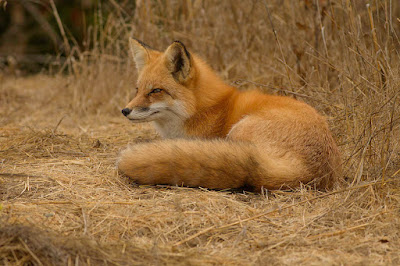That’s a job for New York City’s “on-call fish-rescuer,” Brenda
Prohaska, whose lifesaving tendencies began with a casual interest in fish and
grew to large-scale life-saving, attracted a partner in fish-rescue and earned recent
publicity and kudos for both of them.
Well, why not? They
deal in aiding aquatic creatures in life-threatening situations who, as with
other animals in distress, also need help: "Attention must be paid!” And, with about 90 rescues in the last three
years, this Bronx cosmetology teacher agrees.
Typically contacted for rescue via her Facebook page, Prohaska
shows up in her “fish-rescue ambulance,” otherwise known as a beat-up hearse, carrying
her rescue gear and space for those she saves.
Her partner, Laboy Wiggins, a disabled construction worker, drives up to
three hours from his home in Pennsylvania to NYC to help in a cause that he also
finds restful and healing.
Both rescuers also house fish in their homes, but
Wiggins wins the “biggest tank" prize because he has opted to care for some surprisingly large fish. https://tinyurl.com/mpan27rh
Meanwhile, back off our coast
 |
| Humpback whale |
Right now, various theories for why these deaths have
occurred are in play – from boat strikes to offshore wind development -- with
no definitive problem identified and therefore no protective solutions implemented.
A sad media photo of a dead humpback
whale being hauled back from the water for beach burial must serve as motivation
for quick action to protect humpback and right whales, as well as dolphins.
 |
| (assumed to be a sperm whale) |
Sperm whales are family folk
“Sperm whales are the loudest and largest-brained of marine
animals. They might also be the most
tender.”
If that caption doesn’t prompt you to read the rest of the
book review, replete with stunning whale photos, just read the highlights
here. After being nearly wiped out by
the 1970s, this whale species is slowly repopulating. Humans can best see (and hear) sperm whales diving
deep, sleeping vertically, grooming, nursing and at play off Dominica in the Caribbean.
That’s where the author-marine scientist-photographer Gaelin
Rosenwaks went before producing Sperm Whales: The Gentle Goliaths of the
Ocean (Rizzoli). In their complex
matrilineal society, females (about 30,000 pounds) stay bonded for life,
averaging 70 years, while males (who can reach 100,000 pounds) stay with their
mothers for a decade before going off on their own. Social beings who associate in families, then
in clans, sperm whales use their rhythmic sonar clicks, or “codas,” to communicate
and hunt.
Watch a short video of the author with a sperm whale and
listen to the clicks. https://tinyurl.com/2rnpt3ps
Megalodons ruled ancient seas
And finally, among water creatures, sharks – or one shark in particular: the megalodon, the biggest predatory fish of all time. While long extinct, the megalodon “ruled the waves” and all other animals in ancient oceans.
Today, in “Sharks,” a long-running exhibition at Manhattan’s American Museum of Natural History, the gaping jaws of a scientifically accurate model of megalodon greets visitors as the start of the exhibition. This is a reminder of an earlier post here: Now is the time to pick a date for your NYC visit and order timed ticket(s) online (AMNH.org/exhibitions/sharks) well before Labor Day/Sept. 4, when the exhibition ends.
#
#











